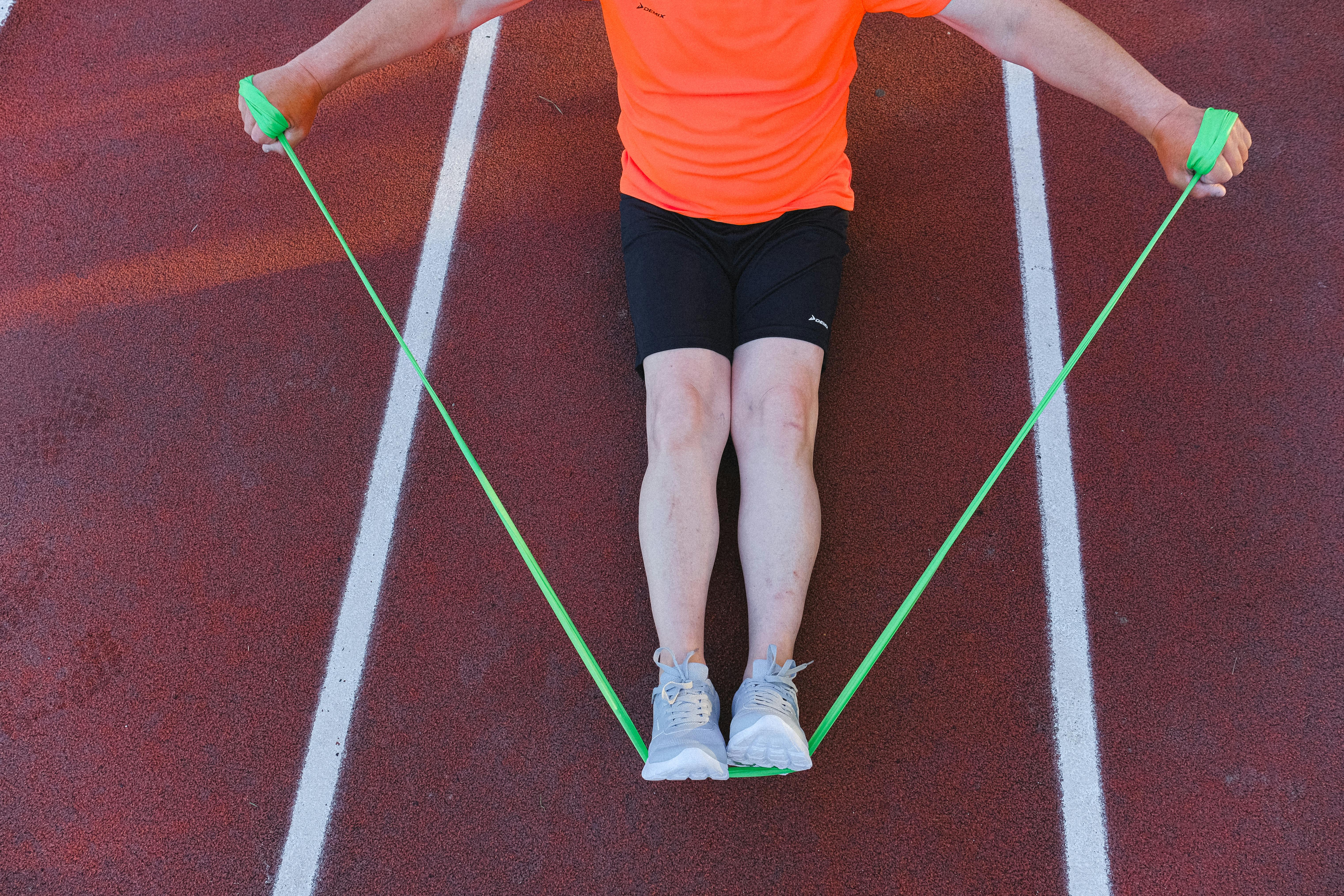Practical Guide to Effective Push-Pull Trainingsplan for 2025: Get Started Now!
The push-pull trainingsplan has emerged as a popular method in strength training, catering to the needs of fitness enthusiasts aiming for optimal muscle growth and performance. By categorizing exercises into push and pull movements, this approach not only enhances workout efficiency but also promotes balanced muscle development. Understanding the fundamentals of this training style is crucial for reaching fitness goals effectively.
This article presents a comprehensive roadmap for implementing a push-pull training program tailored for 2025. Whether you’re a beginner or an experienced lifter, you’ll find valuable insights into structuring your workouts, maximizing intensity, and ensuring proper recovery. Embracing these principles can lead to significant improvements in muscle hypertrophy, strength progression, and overall fitness.
Key takeaways include an overview of various exercises for each muscle group, suggestions for progression techniques, and an exploration of nutrition’s role in supporting your fitness journey. With a blend of theory and practical application, this guide will empower you to design an effective push-pull training regime that aligns with your fitness aspirations.

Understanding the Push-Pull Split Principle
Building on the foundation of strength training, the push-pull split divides workouts into two primary categories: pushing exercises and pulling exercises. This logical arrangement allows for focused engagement of specific muscle groups, optimizing recovery and performance.
What is a Push Training Day?
Push training involves exercises that target the muscles involved in pushing movements, primarily including the chest, shoulders, and triceps. Common exercises include bench presses, shoulder presses, and tricep extensions. This section of the training plan is crucial for building upper body strength.
What is a Pull Training Day?
Conversely, pull training encompasses exercises targeting the back, biceps, and forearms. Movements such as deadlifts, pull-ups, and rows are effective in developing these muscle groups. Thus, a well-structured pull day can enhance overall upper body strength and posture.
Benefits of a Push-Pull Program
One of the primary advantages of the push-pull training split is the enhanced recovery it provides to muscle groups. By alternating between push and pull days, each muscle group receives adequate rest before being engaged again. This modality of training promotes not only muscle strength but also endurance, providing comprehensive development across all major muscle groups.
Creating Your Own Push-Pull Schedule
Designing a push-pull schedule varies based on your fitness level and goals. For beginners, starting with a 3-day routine alternating between push and pull days is ideal. More advanced athletes may consider a 4 or 5-day split, allowing for increased frequency and intensity. Understanding your body and fitness goals will guide the frequency and design of your push-pull workouts.
Integrating Training Variations
To prevent boredom and enhance results, integrating various training techniques and equipment is essential. You may include traditional weights, kettlebells, or bodyweight exercises in your regimen. Utilizing resistance bands and engaging in functional training can further diversify your workouts while maintaining effectiveness.
Ensuring Proper Warm-Up and Cool-Down
In any effective fitness regimen, proper warm-up and cool-down activities are paramount. Engaging in dynamic stretching before your sessions and static stretching afterward promotes joint mobility and aids in recovery. Integrating these elements will optimally prepare you for your push-pull workouts.

Effective Training Techniques for Push and Pull Days
Equipping yourself with the right techniques will enhance the effectiveness of your push-pull training. The incorporation of varied methods not only keeps workouts engaging but also maximizes muscle hypertrophy and strength gains.
High-Intensity Training Methods
Implementing high-intensity training (HIT) techniques on push and pull days can elevate your training sessions. Techniques such as drop sets, supersets, and circuit training create a challenging environment that fosters progress. Understanding how to apply these methods in specific workouts can unlock new heights in your training journey.
Training Frequency and Progression
Finding the ideal training frequency is crucial for continuous muscle growth without the risk of overtraining. Aim to engage each muscle group at least twice a week while tracking your progress. Gradually increasing weights and adjusting repetitions can significantly impact strength and muscle development. Setting measurable goals helps assess your training effectiveness.
Nutrition for Optimal Muscle Growth
Nutrition plays a significant role in the effectiveness of any fitness program. Consuming an adequate balance of proteins, carbohydrates, and healthy fats supports muscle repair and growth. Meal planning tailored to complement your training sessions is essential for achieving your fitness goals. Consulting with a sports nutrition expert may enhance your approach.
Recovery and Rest Days
Incorporating dedicated recovery days into your training plan is equally important as workout days. Ensure to allow your body sufficient time to recuperate. Strategies for enhancing recovery include sleep, hydration, and active recovery sessions that can help maintain mobility without straining the muscles.
Adapting and Personalizing Your Plan
As you progress in your fitness journey, adapting your training plan is vital. This ensures that you continue to challenge your muscles in new ways. Whether adjusting the types of exercises, altering the number of sets, or adopting new training rhythms, personalization plays a crucial role in ongoing success.
Common Mistakes to Avoid in Push-Pull Training
Most fitness enthusiasts encounter setbacks during their training. Identifying common mistakes can enhance your push-pull training effectiveness and help you stay on track.
Overtraining and Under-recovery
One prevalent issue in push-pull training is the tendency to push oneself too hard, leading to overtraining. Symptoms include fatigue, lowered performance, and increased injury risk. It is vital to listen to your body and prioritize recovery.
Neglecting Nutrition
Often, workout aspirations can overshadow the importance of proper nutrition. Without a well-balanced diet, even the best training plans can yield suboptimal results. Keep nutrition at the forefront of your fitness objectives to maximize your outcomes.
Inconsistent Training
Inconsistency can hinder progress in any fitness journey. Establishing a training routine is essential for continual improvement. Adhering to a set schedule fosters accountability and strengthens commitment to your fitness goals.
Ignoring Technique
Focusing solely on lifting heavy weights without maintaining proper technique increases injury risk. Prioritizing form ensures safer workouts and maximizes the effectiveness of each exercise.
Avoiding Feedback and Assessment
Regularly assessing your progress provides insight into your fitness journey. Utilizing fitness tracking tools or journaling can help you identify trends, strengths, and areas of improvement. Feedback is vital for refining your approach and hitting your fitness milestones.
Setting and Achieving Your Fitness Goals
Creating achievable fitness goals serves as a powerful motivator throughout your training journey. Understanding the principles of goal setting can significantly impact your success.
The SMART Goal Framework
Implementing the SMART goal framework—Specific, Measurable, Achievable, Relevant, Time-bound—provides clarity and structure. Clear goals allow you to build training routines that align with your progress and aspirations.
Short-term vs. Long-term Goals
Establishing both short-term and long-term fitness goals creates a balanced roadmap for your journey. Short-term achievements, such as improving a lift or maintaining consistent attendance, serve as stepping stones toward reaching long-term aspirations like body composition changes or strength milestones.
Tracking Your Progress
Consistent tracking of your progress is essential for staying motivated. Whether through fitness apps or traditional journals, documenting workouts and nutrition can provide motivation and insights into your evolving fitness journey.
Celebrating Milestones
Acknowledging and celebrating milestones boosts motivation and sustained effort. Celebratory moments remind you of how far you have come and reaffirm your dedication to your fitness goals.
Enhancing Your Push-Pull Experience Through Community Support
A supportive community can significantly enrich your fitness journey. Engaging with others can provide motivation and accountability as you navigate your push-pull training.
Joining a Fitness Community
Connecting with a fitness community—whether online or in person—offers encouragement and shared insights. Training alongside others introduces camaraderie and diverse perspectives on training techniques and nutrition.
Participating in Group Classes
Group training classes centered on push-pull workouts can motivate you and introduce new training variations. These classes provide an excellent opportunity to intensify your sessions while fostering social connections.
Seeking Professional Guidance
Consider hiring a personal trainer specializing in push-pull routines. Personalized coaching ensures that your training is tailored to your unique goals and fitness level. Expert advice encourages proper form and maximizes training effectiveness.
Online Resources and Fitness Apps
Numerous online resources and fitness apps offer training guidance, nutritional advice, and community engagement. Leveraging these digital tools can enhance your knowledge and adapt your training plan as needed.
Conclusion: Begin Your Push-Pull Journey Today!
Adopting an effective push-pull training plan is a powerful step toward achieving your fitness goals for 2025 and beyond. By education on the structure of this training style, implementing proper techniques, and ensuring adequate recovery and nutrition, you will set yourself up for success. Remember to adjust your plan according to your progress and remain engaged with your fitness community for added motivation.
As you embark on your push-pull training journey, keep the principles discussed in this guide at the forefront of your approach. Embrace the challenges of training, celebrate your successes, and most importantly, stay committed to your fitness aspirations!
